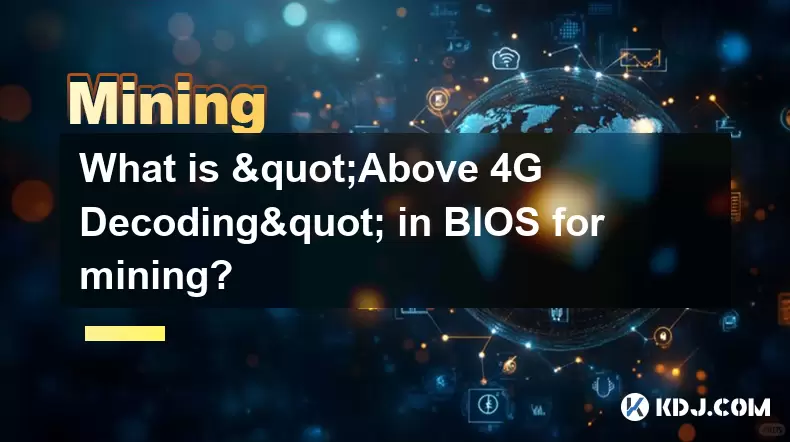-
 Bitcoin
Bitcoin $117,991.5647
-0.03% -
 Ethereum
Ethereum $2,966.4808
0.18% -
 XRP
XRP $2.8076
0.64% -
 Tether USDt
Tether USDt $1.0003
0.00% -
 BNB
BNB $689.9050
-0.63% -
 Solana
Solana $162.0407
-0.80% -
 USDC
USDC $0.9999
0.00% -
 Dogecoin
Dogecoin $0.1995
-1.51% -
 TRON
TRON $0.3001
-1.21% -
 Cardano
Cardano $0.7426
3.25% -
 Hyperliquid
Hyperliquid $47.7978
2.84% -
 Stellar
Stellar $0.4411
16.52% -
 Sui
Sui $3.4267
0.15% -
 Chainlink
Chainlink $15.3148
0.07% -
 Bitcoin Cash
Bitcoin Cash $506.5880
-1.91% -
 Hedera
Hedera $0.2222
12.41% -
 Avalanche
Avalanche $21.2049
1.67% -
 UNUS SED LEO
UNUS SED LEO $9.0606
-0.19% -
 Shiba Inu
Shiba Inu $0.0...01325
-0.86% -
 Toncoin
Toncoin $2.9979
0.32% -
 Litecoin
Litecoin $94.3717
1.13% -
 Polkadot
Polkadot $3.9873
-0.29% -
 Monero
Monero $336.1497
0.92% -
 Dai
Dai $0.9999
-0.01% -
 Uniswap
Uniswap $8.5189
-0.60% -
 Ethena USDe
Ethena USDe $1.0005
-0.04% -
 Pepe
Pepe $0.0...01236
-0.92% -
 Bitget Token
Bitget Token $4.4002
-0.23% -
 Aave
Aave $303.5433
1.05% -
 Bittensor
Bittensor $391.1314
-0.35%
What is "Above 4G Decoding" in BIOS for mining?
Enabling "Above 4G Decoding" in BIOS allows GPUs to access memory beyond 4GB, improving stability and performance in mining rigs with multiple high-memory graphics cards.
Jul 13, 2025 at 10:08 am

Understanding BIOS and Its Role in Mining
The BIIOS (Basic Input/Output System) is a crucial component of any computer system, serving as the foundational software that initializes hardware during the boot process. For cryptocurrency mining rigs, especially those using GPUs, optimizing BIOS settings can significantly affect performance and stability.
In mining operations, where systems often run continuously with heavy GPU loads, ensuring that every hardware component communicates efficiently with the motherboard is essential. One such setting that directly impacts this communication is "Above 4G Decoding." This option is typically found in the BIOS settings under PCIe configuration or advanced chipset features.
Above 4G Decoding allows the system to allocate memory addresses above the traditional 4GB boundary for PCI Express devices like GPUs. This becomes particularly important when dealing with multiple high-memory GPUs used in mining setups.
What Does "Above 4G Decoding" Mean?
The term "Above 4G Decoding" refers to how the system handles memory addressing for peripheral devices connected via PCIe slots. In older systems, the memory addressing limit was capped at 4GB due to the 32-bit architecture. However, modern systems use 64-bit architectures that support much larger memory spaces.
When "Above 4G Decoding" is enabled, it tells the motherboard to allow PCIe devices — such as graphics cards — to access memory addresses beyond the 4GB threshold. This is vital for systems with multiple GPUs, each potentially having 8GB or more of VRAM. Without enabling this feature, some of the memory on these cards may become inaccessible or cause conflicts.
- Memory Addressing Limitation: Older systems restricted PCIe devices to 4GB of addressable space.
- Modern Expansion: Enabling Above 4G Decoding removes this limitation, allowing full utilization of GPU memory.
Why Is It Important for Mining?
Cryptocurrency mining requires intense computational power, often provided by multiple GPUs working simultaneously. Each GPU needs direct and unobstructed access to system memory for optimal performance. If a GPU cannot access all its allocated memory due to address conflicts, it may crash or operate inefficiently.
Enabling "Above 4G Decoding" ensures that each GPU in your mining rig can map its entire memory range without overlapping with other devices. This reduces the risk of system instability and improves hashing efficiency.
- Prevents Memory Conflicts: Ensures no overlap between memory ranges assigned to different GPUs.
- Enhances Stability: Reduces crashes and reboots caused by memory allocation errors.
How to Enable "Above 4G Decoding" in BIOS
Accessing and modifying BIOS settings varies slightly depending on the motherboard manufacturer, but the general steps remain consistent across most platforms.
To enable "Above 4G Decoding," follow these instructions:
- Restart Your System: Initiate a reboot and press the appropriate key (usually Del, F2, or Esc) to enter BIOS setup.
- Navigate to Advanced Settings: Look for sections labeled "Advanced," "Chipset," or "PCIe Configuration."
- Locate the Option: Search for "Above 4G Decoding," sometimes listed as "PCIe Above 4G Decoding" or similar.
- Enable the Feature: Use arrow keys to change the value from "Disabled" to "Enabled."
- Save and Exit: Choose the option to save changes and restart the system.
Potential Issues When Not Enabled
Failing to enable "Above 4G Decoding" in mining configurations can lead to several issues. These problems might not be immediately apparent but can manifest over time as system load increases.
Some common symptoms include:
- GPU Detection Failures: The system may fail to detect one or more GPUs properly.
- Random Crashes: Unexpected shutdowns or freezes during mining sessions.
- Reduced Hash Rates: Performance degradation due to partial GPU memory utilization.
If you experience any of these symptoms and are running multiple GPUs, checking and enabling "Above 4G Decoding" should be among the first troubleshooting steps.
Frequently Asked Questions
Q1: Can enabling "Above 4G Decoding" damage my hardware?
No, enabling this feature does not pose any physical risk to your hardware. It simply adjusts how memory addresses are assigned to PCIe devices and is a safe and recommended setting for multi-GPU mining rigs.
Q2: Do all motherboards support "Above 4G Decoding"?
Most modern motherboards with UEFI BIOS support this feature, especially those designed for gaming or workstation use. However, some budget or older models may lack this option. Always check your motherboard’s manual or specifications online before purchasing.
Q3: Will enabling "Above 4G Decoding" improve mining performance on single GPU setups?
It is unlikely to have a noticeable impact on single GPU systems unless the GPU has a large amount of onboard memory (e.g., 16GB or more). In such cases, enabling the feature may still provide benefits.
Q4: What if I don't see the "Above 4G Decoding" option in BIOS?
If the option is missing, it could be due to motherboard limitations or an outdated BIOS version. Check for available firmware updates from the manufacturer's website and install them if applicable.
Disclaimer:info@kdj.com
The information provided is not trading advice. kdj.com does not assume any responsibility for any investments made based on the information provided in this article. Cryptocurrencies are highly volatile and it is highly recommended that you invest with caution after thorough research!
If you believe that the content used on this website infringes your copyright, please contact us immediately (info@kdj.com) and we will delete it promptly.
- Snorter Trading Bot: The Meme Coin Presale That's More Than Just Hype
- 2025-07-13 18:30:16
- Unlocking Blockchain Insights: A Deep Dive with Bitquery API for Data Query
- 2025-07-13 18:30:16
- HYPE Token & Hyperliquid: Riding the DeFi Wave with Open Interest
- 2025-07-13 16:30:16
- Unilabs Finance Takes Center Stage: Leaving Pepecoin and Floki Inu in the Dust?
- 2025-07-13 16:30:16
- Crypto Investors Ditching Meme Coins for BlockchainFX: The Smart Money Move?
- 2025-07-13 17:05:16
- Bitcoin, Indian Investors, and Tax Filing: Navigating the Crypto Boom
- 2025-07-13 17:05:16
Related knowledge

How to keep a mining rig cool
Jul 12,2025 at 01:42pm
Understanding the Importance of Cooling in Mining RigsCryptocurrency mining is an intensive process that places heavy demand on hardware components, p...

How much does it cost to start crypto mining?
Jul 13,2025 at 12:22am
Understanding the Basic Costs of Crypto MiningStarting crypto mining involves several upfront and ongoing expenses. The primary costs include hardware...

What is the most profitable crypto to mine?
Jul 13,2025 at 07:00am
Understanding Mining Profitability in CryptocurrencyWhen evaluating the most profitable crypto to mine, it's essential to consider several factors tha...

What do I need to start mining crypto?
Jul 13,2025 at 12:28am
Understanding the Basics of Crypto MiningCrypto mining is the process by which transactions are verified and added to a blockchain, and new coins are ...

How does crypto mining work?
Jul 13,2025 at 11:01am
Understanding the Basics of Crypto MiningCrypto mining is the process through which new cryptocurrency coins are introduced into circulation and trans...

How to find the best Dogecoin mining pool for me
Jul 12,2025 at 04:14pm
Understanding the Role of a Mining PoolWhen mining Dogecoin, joining a mining pool can significantly increase your chances of earning consistent rewar...

How to keep a mining rig cool
Jul 12,2025 at 01:42pm
Understanding the Importance of Cooling in Mining RigsCryptocurrency mining is an intensive process that places heavy demand on hardware components, p...

How much does it cost to start crypto mining?
Jul 13,2025 at 12:22am
Understanding the Basic Costs of Crypto MiningStarting crypto mining involves several upfront and ongoing expenses. The primary costs include hardware...

What is the most profitable crypto to mine?
Jul 13,2025 at 07:00am
Understanding Mining Profitability in CryptocurrencyWhen evaluating the most profitable crypto to mine, it's essential to consider several factors tha...

What do I need to start mining crypto?
Jul 13,2025 at 12:28am
Understanding the Basics of Crypto MiningCrypto mining is the process by which transactions are verified and added to a blockchain, and new coins are ...

How does crypto mining work?
Jul 13,2025 at 11:01am
Understanding the Basics of Crypto MiningCrypto mining is the process through which new cryptocurrency coins are introduced into circulation and trans...

How to find the best Dogecoin mining pool for me
Jul 12,2025 at 04:14pm
Understanding the Role of a Mining PoolWhen mining Dogecoin, joining a mining pool can significantly increase your chances of earning consistent rewar...
See all articles

























































































